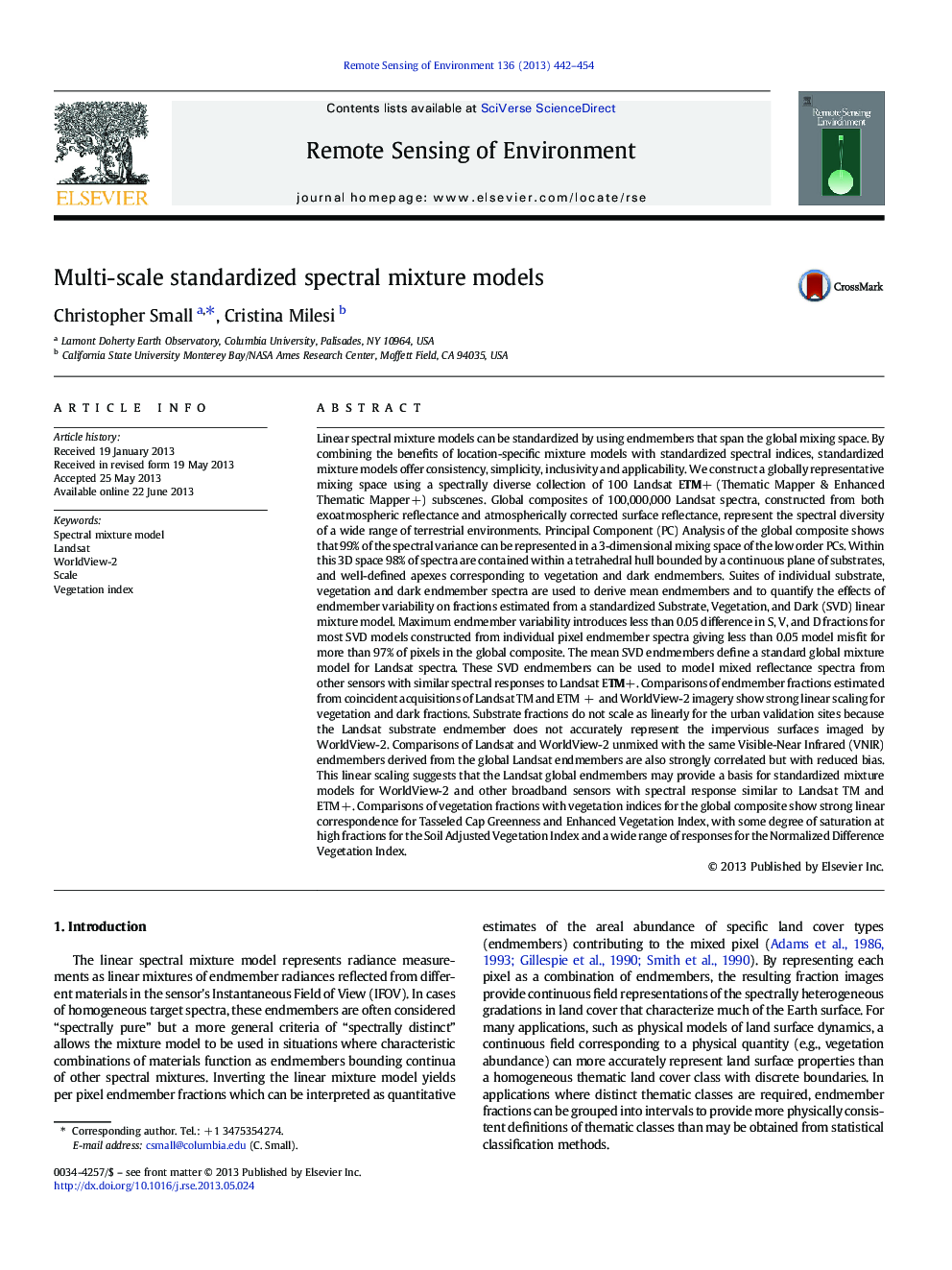| کد مقاله | کد نشریه | سال انتشار | مقاله انگلیسی | نسخه تمام متن |
|---|---|---|---|---|
| 6347442 | 1621264 | 2013 | 13 صفحه PDF | دانلود رایگان |
- A spectrally diverse set of 100 Landsat subscenes is compiled for a global composite.
- Global endmembers provide the basis for a standardized spectral mixture model.
- Coincident Landsat and WorldView-2 endmember fractions show strong linear scaling.
Linear spectral mixture models can be standardized by using endmembers that span the global mixing space. By combining the benefits of location-specific mixture models with standardized spectral indices, standardized mixture models offer consistency, simplicity, inclusivity and applicability. We construct a globally representative mixing space using a spectrally diverse collection of 100 Landsat ETM+ (Thematic Mapper & Enhanced Thematic Mapper +) subscenes. Global composites of 100,000,000 Landsat spectra, constructed from both exoatmospheric reflectance and atmospherically corrected surface reflectance, represent the spectral diversity of a wide range of terrestrial environments. Principal Component (PC) Analysis of the global composite shows that 99% of the spectral variance can be represented in a 3-dimensional mixing space of the low order PCs. Within this 3D space 98% of spectra are contained within a tetrahedral hull bounded by a continuous plane of substrates, and well-defined apexes corresponding to vegetation and dark endmembers. Suites of individual substrate, vegetation and dark endmember spectra are used to derive mean endmembers and to quantify the effects of endmember variability on fractions estimated from a standardized Substrate, Vegetation, and Dark (SVD) linear mixture model. Maximum endmember variability introduces less than 0.05 difference in S, V, and D fractions for most SVD models constructed from individual pixel endmember spectra giving less than 0.05 model misfit for more than 97% of pixels in the global composite. The mean SVD endmembers define a standard global mixture model for Landsat spectra. These SVD endmembers can be used to model mixed reflectance spectra from other sensors with similar spectral responses to Landsat ETM+. Comparisons of endmember fractions estimated from coincident acquisitions of Landsat TM and ETM + and WorldView-2 imagery show strong linear scaling for vegetation and dark fractions. Substrate fractions do not scale as linearly for the urban validation sites because the Landsat substrate endmember does not accurately represent the impervious surfaces imaged by WorldView-2. Comparisons of Landsat and WorldView-2 unmixed with the same Visible-Near Infrared (VNIR) endmembers derived from the global Landsat endmembers are also strongly correlated but with reduced bias. This linear scaling suggests that the Landsat global endmembers may provide a basis for standardized mixture models for WorldView-2 and other broadband sensors with spectral response similar to Landsat TM and ETM +. Comparisons of vegetation fractions with vegetation indices for the global composite show strong linear correspondence for Tasseled Cap Greenness and Enhanced Vegetation Index, with some degree of saturation at high fractions for the Soil Adjusted Vegetation Index and a wide range of responses for the Normalized Difference Vegetation Index.
Journal: Remote Sensing of Environment - Volume 136, September 2013, Pages 442-454
